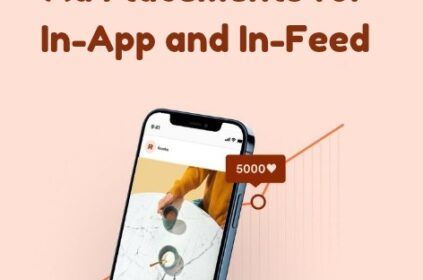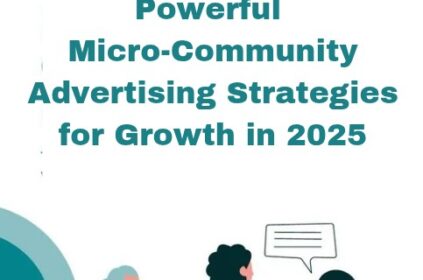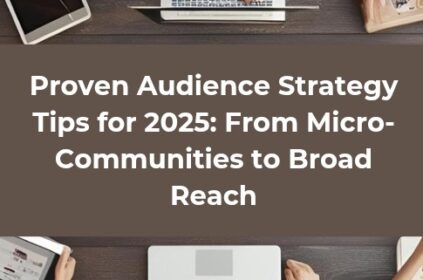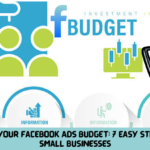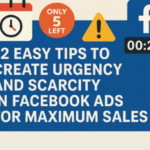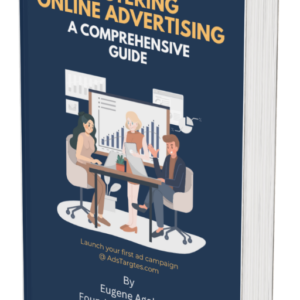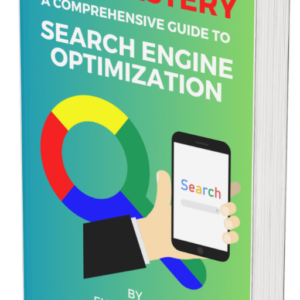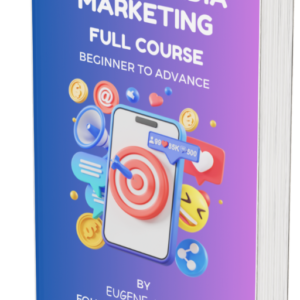The digital advertising world is growing at a staggering rate. In 2025, global digital ad spending is expected to reach $750 billion, marking a 12.3% increase from last year. The shift toward online advertising is so dominant that in some regions, like the UK, digital ads will account for 81% of total advertising revenue. With this rapid expansion, competition is fiercer than ever, and consumers are constantly bombarded with ads across social media, search engines, websites, and mobile apps.
The truth is, getting your ad seen is no longer the challenge—getting it to convert is. Attention spans are shrinking, and users are scrolling past ads in milliseconds. If your ad copy doesn’t immediately grab attention and resonate with your audience, it simply won’t work.
But here’s the good news I have for you: great ad copy is not about writing more—it’s about writing better. The right words can stop a potential customer mid-scroll, spark curiosity, and drive action—whether that’s clicking a link, signing up for a newsletter, or making a purchase.
So, how do you craft ad copy that actually converts in 2025? That’s exactly what this guide will show you. I will break down the best ad copywriting tips of the year, covering everything from emotional triggers and AI-powered personalization to compelling calls to action. Whether you’re a small business owner, a marketer, or an entrepreneur looking to maximize ad performance, this guide will help you turn words into revenue.
What Makes an Ad Copy Convert in 2025?

Writing ad copy that converts isn’t about using fancy words or aggressively pushing a product. It’s about understanding your audience, crafting a message that resonates, and delivering it in a way that compels action.
In 2025, with evolving consumer behavior and AI-driven algorithms shaping ad performance, the key to success lies in blending psychology, data, and creativity.
Here are the fundamental elements that make ad copy effective from my years of experience:
#1. A Compelling Hook: Grabbing Attention Instantly
The average online user’s attention span is now just 8 seconds, meaning you have only a few moments to capture interest. Strong ad copy starts with an attention-grabbing headline or opening line that sparks curiosity or addresses a pain point immediately.
Example: Instead of saying, “We sell the best fitness supplements,” try “Struggling to build muscle? This science-backed formula delivers results in just 30 days.”
#2. Emotional Connection: Speak to Their Desires and Pain Points
People make purchasing decisions based on emotion and later justify them with logic. Whether it’s fear of missing out (FOMO), aspiration, or security, effective ad copy taps into emotions to drive engagement. Research shows that emotionally compelling ads generate 23% more sales than rational ads.
Example: Instead of saying, “Upgrade your home security system,” say, “Protect your family with 24/7 security—because peace of mind is priceless.”
#3. Clear and Persuasive Call-to-Action (CTA)
A great ad copy guides the user on what to do next. Whether it’s “Shop Now,” “Claim Your Free Trial,” or “Learn More,” the CTA should be direct, benefit-driven, and create urgency. Research shows that adding a sense of urgency (e.g., “Limited Offer”) can increase conversions by up to 332% (ConversionXL).
Example: Instead of “Sign up for our course,” try “Start your journey to 6-figure ad campaigns today—Enroll Now!”
#4. AI-Powered Personalization: The Future of Ad Copy
In 2025, AI-driven ad platforms like Meta’s Advantage+ and Google’s Performance Max are transforming how ads are delivered. AI analyzes user intent, past behavior, and interests to ensure ads are highly relevant to each viewer. Brands using AI-powered personalization see up to 80% higher engagement rates.
How can you apply this?
- Use dynamic ad copy that adjusts based on the user’s interests.
- Leverage retargeting ads to remind users of what they left in their cart.
- Personalize the CTA: Instead of a generic “Book a Call,” try “[User’s Name], let’s discuss your strategy today!”
#5. Mobile-Optimized Copy: Keep It Short and Powerful
Over 70% of digital ads are viewed on mobile devices (Statista), so your copy must be short, impactful, and easy to read on small screens. Long paragraphs don’t work—keep sentences concise, make key points stand out, and ensure the CTA is clear.
Example: Instead of “Our revolutionary skincare formula is clinically proven to reduce wrinkles, fine lines, and signs of aging,” try “Bye wrinkles! Get glowing skin in 14 days—shop now.”
What Are the Best Ad Copywriting Tips in 2025?

Now that we’ve covered the fundamentals of high-converting ad copy, let’s explore proven strategies that will help you write compelling ads—even if you’re new to copywriting.
Effective ad copy is not about being overly sales-driven. Instead, it’s about understanding your audience, addressing their needs, and persuading them with clear, benefit-focused messaging.
Below are some of the best ad copywriting techniques for 2025:
#1. Emphasize Benefits Over Features
One of the most common mistakes beginners make is focusing on features rather than benefits. While features describe a product’s characteristics, benefits explain how those features improve the customer’s life.
For example, if you are advertising noise-canceling headphones:
- A feature-focused approach: “Our headphones have advanced noise-canceling technology and a 20-hour battery life.”
- A benefit-driven approach: “Block out distractions and stay focused—our noise-canceling headphones create an immersive experience with 20 hours of uninterrupted sound.”
The second version resonates more because it connects with the user’s needs. Before finalizing your ad copy, always ask yourself: Why should the customer care about this feature? If the answer is unclear, reframe it as a benefit.
#2. Use the PAS Formula: Problem, Agitation, Solution

The Problem-Agitation-Solution (PAS) framework is a powerful way to structure ad copy, especially when targeting customers with a specific pain point.
- Problem: Identify a challenge your audience faces.
- Agitation: Highlight the frustration of dealing with that problem.
- Solution: Present your product or service as the answer.
For example, an ad promoting an online marketing course could use the PAS formula as follows:
- Problem: “Struggling to generate leads with Facebook Ads?”
- Agitation: “Spending money on ads that don’t convert is frustrating and costly.”
- Solution: “Learn proven strategies in our step-by-step Facebook Ads course and start running profitable campaigns.”
This approach works because it makes the problem relatable, intensifies the urgency to solve it, and positions the product as the best solution. Discover my other copywriting frameworks that you should not miss.
#3. Build Trust with Social Proof
Trust is a critical factor in ad conversions. Since customers are skeptical of marketing claims, social proof—such as testimonials, statistics, and endorsements—can significantly improve credibility.
Effective ways to incorporate social proof in ad copy include:
- Customer testimonials: “I increased my email open rates by 67% using this software—highly recommend!”
- User statistics: “Over 50,000 marketers trust our platform for their email marketing needs.”
- Case studies: “See how this brand grew its revenue by 200% with our ad management tool.”
When using social proof, ensure it is specific, verifiable, and relevant to your audience. If customer testimonials are not available, citing industry statistics can enhance credibility.
#4. Write Conversational and Natural Copy
With the rise of voice search and AI-driven interactions, ad copy needs to sound natural and engaging rather than overly formal or robotic.
For instance, instead of writing: “Our scientifically formulated supplement enhances wellness and vitality,”
A more conversational approach would be: “Want to feel more energized every day? Try our all-natural supplement and experience the difference.”
Reading an ad copy out loud can help determine whether it sounds natural. If it feels forced or overly polished, simplify the wording to match real human speech.
#5. Create a Sense of Urgency Without Being Aggressive
Urgency can drive conversions, but it must feel authentic and justifiable. Instead of using generic phrases like “Hurry! Limited time only!” provide a clear and legitimate reason for urgency.
Effective approaches include:
- Limited-time offers with specific deadlines: “Get 25% off—offer ends at midnight.”
- Scarcity based on real availability: “Only 15 spots left—secure yours today.”
- Upcoming price increases: “Enroll now before prices go up next week.”
Overusing urgency tactics or fabricating scarcity can erode trust. The key is to use urgency sparingly and only when it reflects real conditions.
Writing ad copy that converts requires a balance of clarity, persuasion, and audience understanding. The next step is to apply these principles across different advertising platforms. Since ad copy needs to be tailored to each platform (Facebook, Google, Instagram, TikTok, etc.), understanding the nuances of each channel will further improve performance.
How to Adapt Ad Copy for Different Advertising Platforms
Each advertising platform has its own set of rules, user behavior, and best practices. While the core principles of persuasive ad copy remain the same, how you structure and present your message should align with the specific platform you’re using. Below, I will break down how to tailor your ad copy for major advertising channels, including Facebook, Google, Instagram, and TikTok.
#1. Facebook Ad Copy: Balance Engagement and Direct Response
Facebook Ads thrive on a mix of storytelling and direct response copy. Users scroll through their feeds casually, so your ad needs to grab attention quickly while also providing a clear call to action.
Best Practices for Facebook Ad Copy:
1. Hook in the first line: The opening text should spark curiosity or address a pain point. Example: “Struggling to get leads from Facebook Ads? You’re not alone.”
2. Keep it short and benefit-driven: Users skim content, so make every word count. Example: “Get three times more conversions with this simple ad strategy.”
3. Use a conversational tone: Facebook is a social platform, so write as if you’re talking to a friend.
4. Incorporate social proof: Testimonials, reviews, or user counts can improve credibility.
5. Strong call to action (CTA): Be clear about what you want users to do (e.g., “Sign up now,” “Get your free trial”).
Facebook Ad Copy Example:
“Tired of wasting money on ads that don’t convert? Our proven ad formula has helped over 5,000 businesses increase ROI by 200%. Try it today!”
#2. Google Search Ads: Clarity and Keyword Optimization Are Key
Unlike Facebook, where users passively consume content, Google Ads target people actively searching for a solution. Your copy needs to be straight to the point, keyword-optimized, and focused on intent.
Best Practices for Google Search Ad Copy:
1. Include target keywords naturally in the headline and description to match user intent.
2. Highlight unique value propositions (UVP): What makes your product or service stand out?
3. Use numbers and statistics to improve credibility and click-through rates.
4. Make CTAs action-oriented and clear: “Get a Free Quote,” “Book a Call,” “Start Your Free Trial.”
Google Search Ad Copy Example:
“Best Social Media Marketing Course | Increase Your ROI by 3X Learn from top industry experts. Lifetime access plus free templates. Enroll today and start growing!”
#3. Instagram Ad Copy: Visual and Emotionally Driven
Instagram is a highly visual platform, so your ad copy needs to complement the image or video while evoking emotions. Unlike Facebook, Instagram ads work best with minimal text, as users expect a seamless visual experience.
Best Practices for Instagram Ad Copy:
1. Pair strong visuals with concise copy: The image or video does most of the work.
2. Use a friendly, aspirational tone: Instagram is lifestyle-driven, so storytelling works well.
3. Leverage hashtags strategically: This helps expand reach without cluttering the main message.
4. Place CTAs within the caption or use Instagram’s CTA buttons (“Shop Now,” “Learn More”).
Instagram Ad Copy Example:
“Want glowing skin in just seven days? Try our all-natural vitamin C serum and see the difference! #GlowUp #SkincareEssentials”
#4. TikTok Ad Copy: Short, Engaging, and Trend-Driven
TikTok’s audience responds best to authentic, fast-paced, and interactive content. Unlike other platforms, ad copy should feel natural, informal, and aligned with viral trends.
Best Practices for TikTok Ad Copy:
1. Keep text minimal: The focus is on the video, so copy should be snappy and engaging.
2. Use relatable language: Avoid sounding like a traditional ad—TikTok users prefer organic, casual content.
3. Incorporate FOMO (Fear of Missing Out): Time-sensitive offers or trending challenges work well.
4. Leverage interactive CTAs: Encourage viewers to comment, stitch, or duet.
TikTok Ad Copy Example:
“POV: You just found the best wireless earbuds for under $50! Don’t miss this deal—link in bio!”
Crafting ad copy that converts requires customization for each platform. What works on Facebook won’t necessarily perform well on TikTok, and Google Ads demand a different approach altogether. By tailoring your ad copy to match platform-specific behaviors, you’ll increase engagement, conversions, and return on ad spend (ROAS).
Conclusion
With brands and advertisers competing fiercely for consumer attention, ad copy remains the backbone of every successful campaign. No matter how advanced targeting and automation become, the right words will always be the key to capturing interest, building trust, and driving conversions.
By implementing the strategies discussed in this article, you can craft ad copy that not only attracts attention but also drives meaningful results. Now, it’s time to put these insights into action and start writing ads that connect with your audience and maximize conversions.
If you’re ready to scale your advertising efforts and achieve better ROI, explore AdsTargets’ advanced ad solutions—built to help you reach the right audience with precision and impact.


